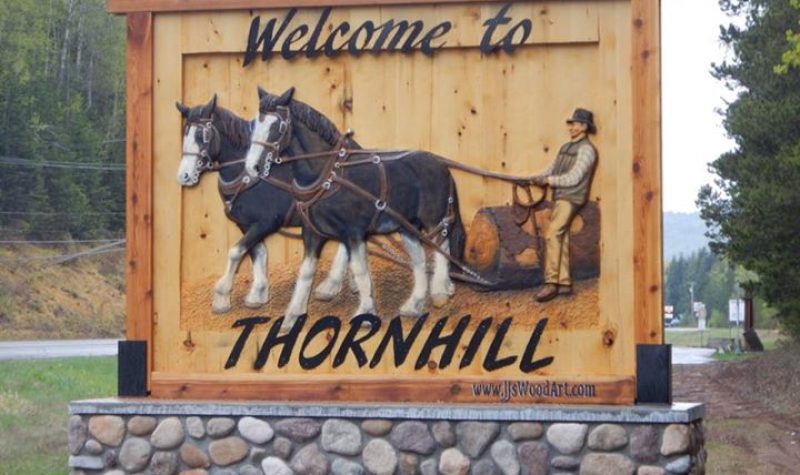The Regional District of Kitimat-Stikine is supporting a campaign to add Thornhill to provincial highway destination distance signs.
Thornhill is an unincorporated settlement right beside Terrace that holds a population of over 5,000 people.
Bob Erb is the Thornhill resident who came up with the original idea to include the community on provincial signs. Erb started a petition following the installation of a “Welcome to Thornhill” sign which he paid $10,000 for in 2017. At a refurbishing reveal of the sign in July, Erb said that the Ministry of Transportation and Infrastructure was reluctant to include the community to avoid confusing drivers due to the proximity between Terrace and Thornhill.
After seeing Erb’s efforts documented in the local newspaper, Martin Holzbauer, a fellow resident of Thornhill, decided to do some research and get involved. After asking the ministry what needs to be done to make this change happen, Holzbauer went to a board meeting on Aug. 19 to ask board members to make the request to the province. The movement was adopted by board director Jeff Hammond.
The ministry was unable to give more information, but according to the Manual of Standard Traffic Signs and Pavement Markings, destination signs must contain a maximum of three communities with a minimum population of 1,000; extra destination signs may be installed 200-300 metres behind the primary sign containing another three communities and must offer basic motorist services.
If the request was approved, all costs associated would be covered by the province.
There has been a debate happening for years in both communities on whether or not Thornhill is part of Terrace. Some people feel that due to a lack of healthcare facilities and other amenities, Thornhill could not stand as it’s own community.
However, many people from Thornhill feel that if land was sold for either commercial or industrial use, Thornhill could become larger than Terrace. Members who support the movement feel that these signs could help preserve a community identity.
Listen to the CFNR story below:


